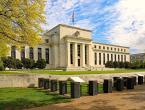On Thursday (September 30), the U.S. dollar index hit 94.50 intraday, the highest level since September 28 last year; it fell 0.13% in late trading to 94.25; this month, the U.S. dollar rose 1.72%, rising for the second consecutive month , Rose 2.05% in the third quarter. The U.S. 10-year Treasury bond yield fell for the second day in a row, with the benchmark 10-year U.S. Treasury yield reported at 1.487%.
Marc Chandler, chief market strategist at Bannockburn Forex, wrote in a research report that after the U.S. dollar surged on Wednesday, there was a clear tone of consolidation.
The dollar as a whole is supported by the sharp rise in U.S. Treasury yields, and the market is expected to reduce the monetary stimulus plan from November, despite the slowdown in global economic growth.
However, Thursday’s economic data partially weakened the dollar’s strength. As of the week of September 25, the number of initial applications increased to 362,000, which has increased for the third consecutive week. Another report released by the US Department of Commerce on Thursday showed that the US second-quarter gross domestic product (GDP) increased by 6.7% year-on-year, compared with the previous value reported in August of 6.6%. The government's pandemic aid funds boosted consumer spending, which in turn boosted economic growth.
Joseph Marlow, assistant economist at Capital Economics, wrote in a research report that even if the U.S. dollar declines further in the short term, we expect it to regain its recent gains in due course. Although the long-term bond yields of most major economies have risen, the U.S. bond yields have risen more than most public bonds, and, importantly, the rise is largely driven by the rise in real yields, which reflects the Expectations of tight monetary policy.
The euro continued to fall and was the worst-performing G-10 currency that day. It fell 0.16% in late trading to 1.1580, and earlier hit 1.1563, the lowest since July 2020. The euro was subject to cross-selling pressures from the British pound and the yen and monthly hedging. Trading suppression. In September, the euro fell 1.94% against the US dollar, after falling 2.34% in the third quarter.
The yen rebounded after falling for six consecutive days. The dollar hit 112.08 against the yen, the highest since February 2020; it fell 0.60% in late trading to 111.29, the largest single-day percentage drop since mid-August. However, in September, the dollar rose 1.2% against the yen, and the third quarter recorded a 0.4% increase. With the start of the new semi-annual in Japan, selling above 112.00 may constitute a limit in the short term.
The pound rose 0.35% to 1.3474 against the dollar; under the incentive of short covering, it reached an intraday high of 1.3517 in late London trading, and traders digested the Bank of England’s interest rate hike expectations.
The U.S. dollar fell 0.60% to 1.2680 against the Canadian dollar; the risk-sensitive Australian dollar rose 0.71% to $0.7227 against the US dollar. The price of iron ore rebounded before China’s Eleven Golden Week holiday. The Australian dollar fell 0.9% overnight; The dollar rose 0.44% to 0.6899.
Friday preview
| time | area | index | The former value | Predictive value |
| 07:30 | Japan | August unemployment rate (%) | 2.8 | 2.9 |
| 09:30 | Australia | Monthly rate of investor loan value in August (%) | 1.8 | |
| 14:00 | Germany | August actual retail sales monthly rate (%) | -5.1 | 1.5 |
| 14:00 | Germany | Annual rate of actual retail sales in August (%) | -0.3 | 1.8 |
| 15:50 | France | September Markit Manufacturing PMI Final Value | 55.2 | 55.2 |
| 15:55 | Germany | September Markit Manufacturing PMI Final Value | 58.5 | 58.5 |
| 16:00 | Eurozone | September Markit Manufacturing PMI Final Value | 58.7 | 58.7 |
| 16:30 | U.K | September Markit Manufacturing PMI Final Value | 56.3 | 56.3 |
| 17:00 | Eurozone | The initial value of the CPI annual rate without seasonal adjustment in September (%) | 3 | 3.3 |
| 17:00 | Eurozone | The initial value of the core CPI annual rate without seasonal adjustment in September (%) | 1.6 | 1.9 |
| 20:30 | America | August PCE price index annual rate (%) | 4.2 | 4.2 |
| 20:30 | America | August core PCE price index annual rate (%) | 3.6 | 3.5 |
| 20:30 | America | Monthly rate of personal expenditure in August (%) | 0.3 | 0.6 |
| 20:30 | Canada | July seasonally adjusted GDP monthly rate (%) | 0.7 | -0.2 |
| 20:30 | Canada | July seasonally adjusted GDP annual rate (%) | 8 | 5 |
| 21:45 | America | September Markit Manufacturing PMI Final Value | 60.5 | 60.5 |
| 22:00 | America | September University of Michigan Consumer Confidence Index Final Value | 71 | 71 |
| 22:00 | America | September ISM Manufacturing PMI | 59.9 | 59.5 |
| 01:00 AM | America | The total number of wells drilled in the United States for the week as of October 1 (ports) | 521 | 526 |
| 01:00 AM | America | The total number of oil rigs (mouth) in the week as of October 1 | 421 | 424 |
07:50 The Bank of Japan Announces Summary of Opinions of Monetary Policy Committee Members on September 21-22
23:00 Philadelphia Federal Reserve Chairman Hacker gave an online speech at an event
01:00 in the morning, Cleveland Federal Reserve Chairman Meester gave a speech on inflation and employment
Summary of Institutional Views
Westpac: Short-term strong dollar is expected to continue to rise
Westpac said that as the U.S. real interest rate recalculates the Fed’s November or December reduction in the scale of quantitative easing and the hawkish adjustment of the dot matrix chart, the U.S. dollar index may rise further in the short term. At the September meeting, the Fed’s policy will be hawkish. After adjustment, the overnight index swap market currently expects the Fed to raise interest rates three times before the end of 2023, which is very close to the median of 1.00% in 2023, but for 2024, there is a big disconnect between the dot plot and market interest rates. As the market still underestimates the Fed’s intentions, there is still enough room for real interest rates to provide continuous support for the U.S. dollar, and the U.S. dollar index is expected to rise to 96.00.
Canadian Imperial Bank of Commerce: AUD/USD expected to rebound next year
The Canadian Imperial Bank of Commerce Capital Markets stated that the confirmed lifting of the epidemic lockdown and the recovery of economic activities will promote Australian dollar buying. The epidemic lockdown in Australia's major states has had a significant and profound impact on domestic activities, and there is no sign of ending the lockdown. , The economy is expected to recover rapidly. This is supported by the Reserve Bank of Australia and requires continuous monetary and fiscal policy support. Once the blockade is over, it is expected that the Australian dollar against the US dollar will remain at the 0.70-0.80 range in the past year, and look at the 0.70-0.71 range. At very strong support, it will continue to be at the low end of this range in the next few months before the final rebound in 2022.











